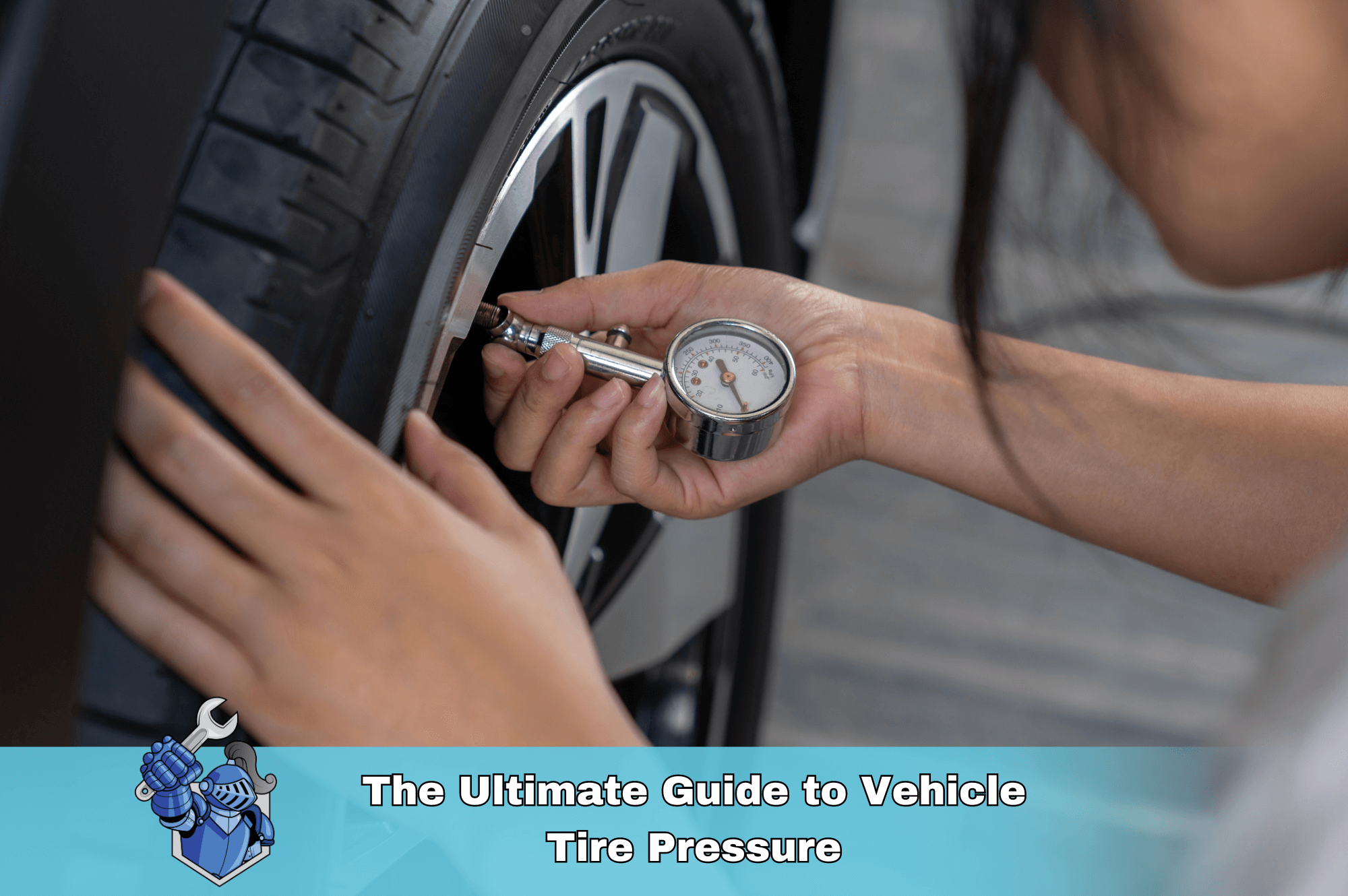Maintaining the correct tire pressure is essential for your vehicle's performance, safety, and fuel efficiency. Whether you're a seasoned driver or a new car owner, understanding the ins and outs of vehicle tire pressure can save you money, prevent accidents, and prolong the life of your tires. In this comprehensive guide, we’ll cover why tire pressure is crucial, how to check and fill your tires, and what maintaining the right pressure does for your car.
Why Tire Pressure is Important
Proper tire pressure is vital for several reasons:
- Safety: Underinflation and overinflation can both lead to tire blowouts, causing accidents.
- Handling: The right tire pressure ensures optimal handling and braking performance.
- Fuel Efficiency: Correctly inflated tires reduce rolling resistance, improving fuel efficiency.
- Tread Wear: Proper pressure ensures even tread wear, extending the life of your tires.
- Load Capacity: Tires at the right pressure can carry the specified load without undue stress.
Understanding Tire Pressure
Tire pressure is measured in PSI (Pounds per Square Inch). The correct PSI for your vehicle can be found in the owner’s manual or on a sticker inside the driver’s side door. It's crucial to note that tire pressure should be checked when the tires are cold, as heat can cause air expansion and give a false reading.
How to Check Your Tire Pressure
Checking your tire pressure is a simple process that requires only a tire pressure gauge. Here's how to do it:
- Find the Valve Stem: Locate the valve stem on each tire. It's usually capped with a small, removable cover.
- Press the Gauge: Firmly press the tire pressure gauge onto the valve stem. You will hear a hiss of air if it’s not pressed correctly.
- Read the Measurement: Read the PSI measurement on the gauge. Compare it to your vehicle’s recommended PSI.
- Repeat: Check all four tires, and don’t forget the spare!
How to Fill Your Tires
If your tires are underinflated, you’ll need to add air. This can be done at home with an air compressor or at a gas station. Here’s how:
- Remove the Valve Cap: Unscrew the valve cap and set it aside.
- Attach the Air Compressor: Attach the air hose to the valve stem. Ensure a tight seal to prevent air from escaping.
- Inflate to Correct PSI: Inflate the tire to the recommended PSI. Most air compressors have a gauge to help you monitor the pressure.
- Check the Pressure Again: Remove the air hose and check the pressure again with your gauge to ensure accuracy.
- Replace the Valve Cap: Screw the valve cap back on.
Consequences of Incorrect Tire Pressure
Driving with incorrect tire pressure can have several negative consequences:
Underinflation:
- Increased tire wear, especially on the edges
- Reduced fuel efficiency
- Poor handling and braking
- Higher risk of blowouts
Overinflation:
- Uneven tire wear, especially in the center
- Reduced contact with the road, affecting traction
- Harsher ride
- Increased risk of blowouts
Tire Pressure Monitoring Systems (TPMS)
Modern vehicles come equipped with a Tire Pressure Monitoring System (TPMS). This system alerts drivers when tire pressure is too low. While TPMS is a helpful tool, it should not replace regular manual checks with a gauge.
Seasonal Changes and Tire Pressure
Temperature fluctuations can significantly impact tire pressure. Cold weather causes air to contract, leading to underinflation, while hot weather can cause overinflation. It's advisable to check your tire pressure more frequently during extreme weather changes.
Tire Maintenance Tips
- Regular Checks: Make it a habit to check your tire pressure at least once a month and before long trips.
- Rotate Your Tires: Regular tire rotation helps ensure even wear. Check your owner’s manual for the recommended rotation schedule.
- Inspect for Damage: Regularly inspect your tires for cuts, punctures, or uneven wear.
- Balance and Align: Ensure your tires are properly balanced and your vehicle is aligned to avoid uneven tire wear.
Importance of Professional Inspections
While regular at-home checks are essential, professional inspections can catch issues you might miss. Professionals can check the overall condition of your tires, alignment, and balance, and ensure your TPMS is functioning correctly.
Resources for More Information
For further details on tire maintenance and safety, consider these resources:
Conclusion
Maintaining proper tire pressure is a straightforward yet crucial aspect of vehicle maintenance. It enhances safety, improves fuel efficiency, and extends the life of your tires. Regular checks, understanding the impacts of temperature changes, and utilizing tools like TPMS can help keep your tires in top shape.
For more tips and detailed guides on vehicle maintenance, visit our Learning Center. Keeping your tires properly inflated is just one of the many ways NobleQuote helps ensure you enjoy a smooth, safe, and efficient driving experience.
FAQ: Popular Questions About Tire Pressure
1. What is the recommended tire pressure for my vehicle?
The recommended tire pressure (PSI) can usually be found in your vehicle's owner’s manual or on a sticker inside the driver’s side door. It varies depending on the make and model of your vehicle.
2. How often should I check my tire pressure?
It’s advisable to check your tire pressure at least once a month and before long trips. Also, check it during extreme weather changes, as temperature fluctuations can affect tire pressure.
3. What are the consequences of driving with underinflated tires?
Underinflated tires can lead to increased tire wear, reduced fuel efficiency, poor handling and braking, and a higher risk of blowouts.
4. How does overinflation affect my tires?
Overinflation can cause uneven tire wear, especially in the center of the tire, reduce contact with the road, resulting in poor traction, provide a harsher ride, and increase the risk of blowouts.
5. What is a Tire Pressure Monitoring System (TPMS)?
A TPMS is a system in modern vehicles that alerts drivers when tire pressure is too low. While it’s a useful tool, it should not replace regular manual checks with a tire pressure gauge.
6. How does temperature affect tire pressure?
Cold weather can cause air in the tires to contract, leading to underinflation, while hot weather can cause air to expand, leading to overinflation. Check your tire pressure more frequently during extreme weather changes.
7. Can I check tire pressure without a gauge?
While TPMS can provide alerts for low tire pressure, the most accurate way to check tire pressure is with a tire pressure gauge.
8. What should I do if I find a cut or puncture in my tire?
If you find any cuts or punctures in your tire, have it inspected and repaired by a professional as soon as possible to prevent further damage and potential blowouts.
9. How do I use an air compressor to fill my tires?
To use an air compressor, remove the valve cap, attach the air hose to the valve stem, inflate the tire to the recommended PSI, check the pressure again with your gauge, and replace the valve cap.
10. Why is it important to rotate my tires?
Rotating your tires ensures even wear, which can prolong their lifespan and improve your vehicle’s handling and safety. Follow your owner’s manual for the recommended rotation schedule.
For more tips and detailed guides on vehicle maintenance, visit our Learning Center. Keeping your tires properly inflated is just one of the many ways NobleQuote helps ensure you enjoy a smooth, safe, and efficient driving experience.
Suggestions for you
Read MoreLet’s work together
Every week we showcase three charitable organizations that our donations are sent to. Our clients are able to choose which of these three will receive their gift when they add coverage to their vehicle...




